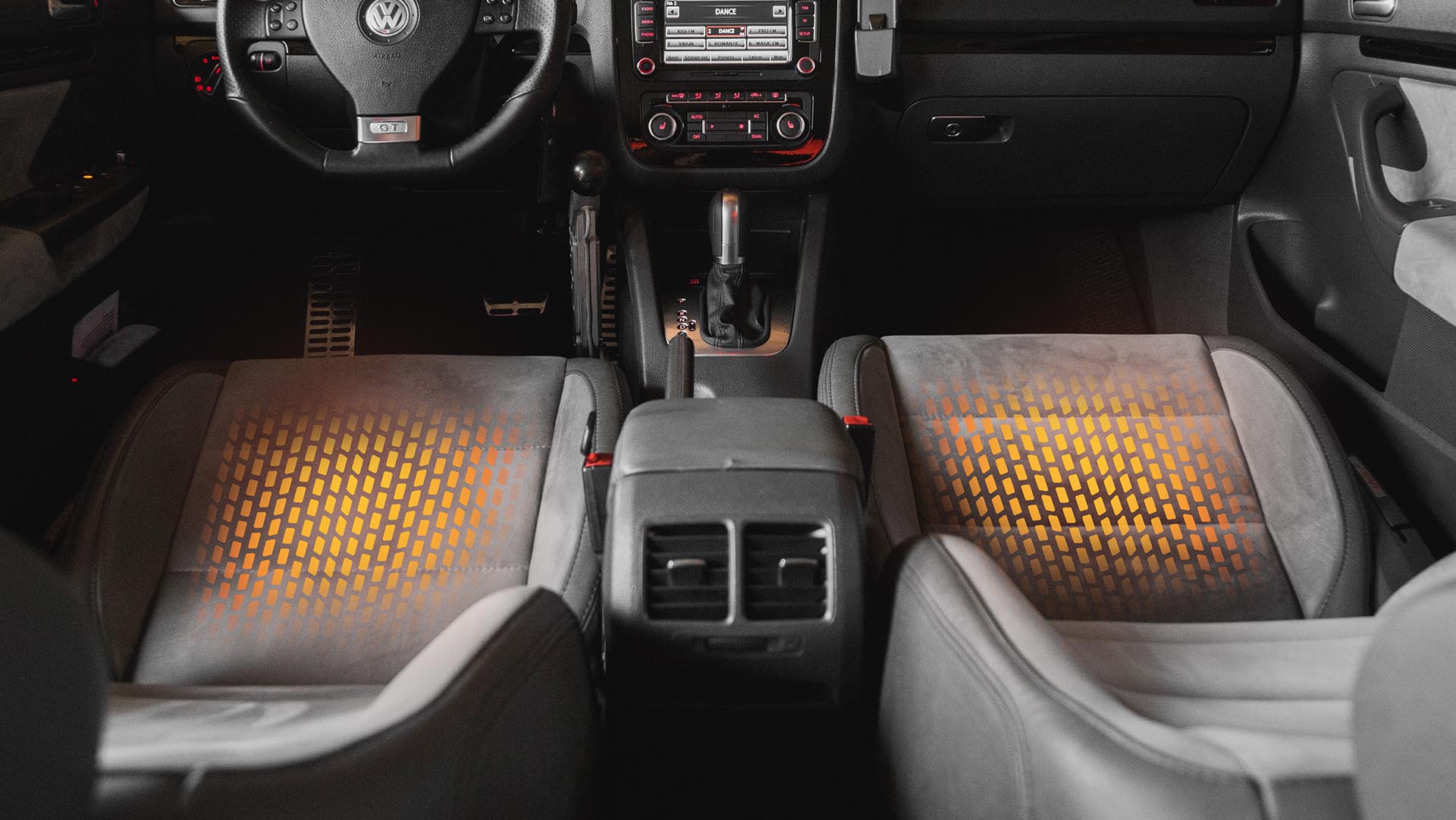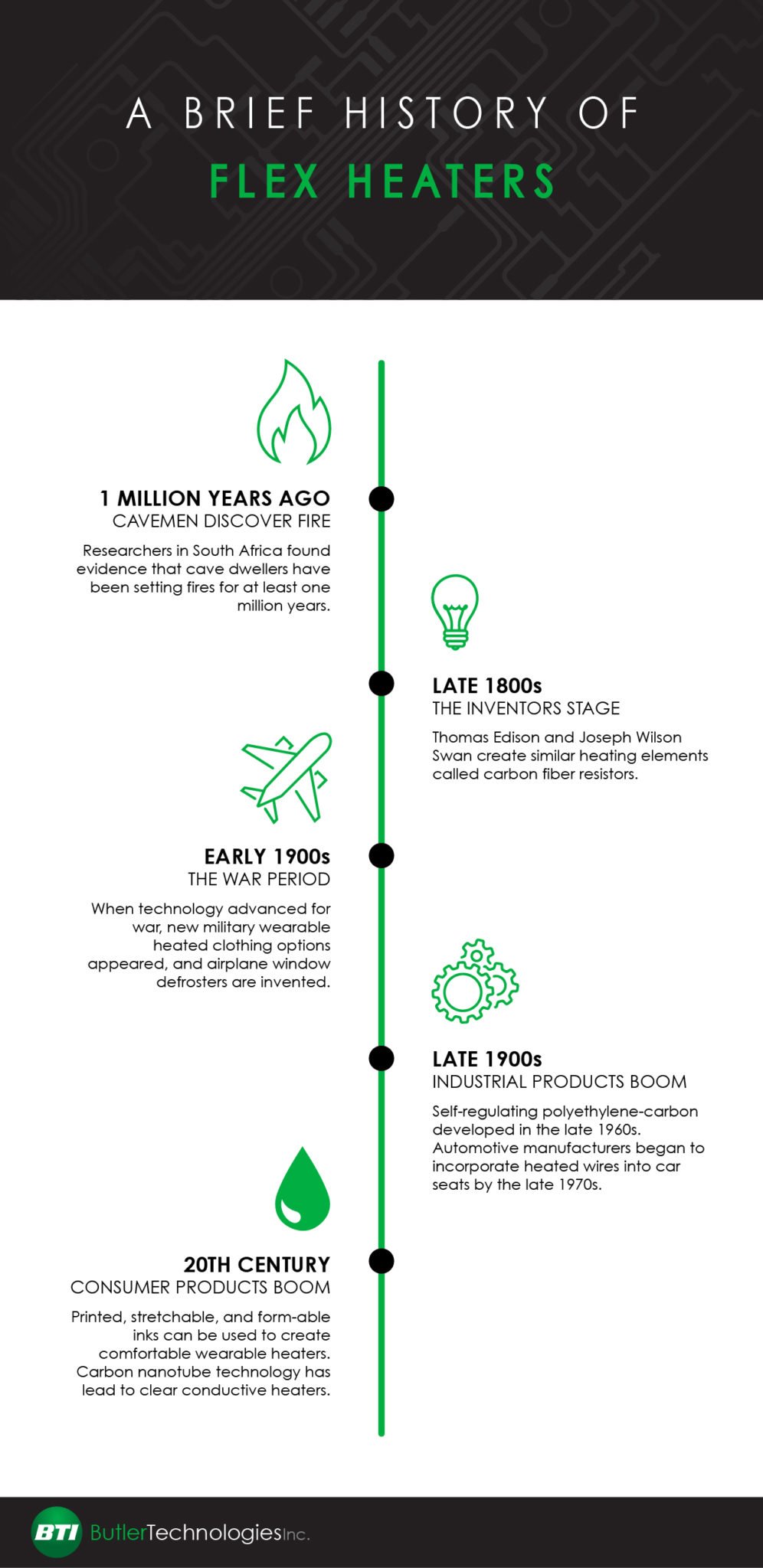Cave dwellers first found out how to create fire about a million years ago in South Africa, according to History.com. Luckily we have evolved since then. Thanks to modern chemists and inventors, today’s heating technology won’t burn you!
For centuries the only heating available was to spark up a fire. Since then, electricity has helped inventors create safe heating elements. Starting from the late 1800s until today, the design of heating elements has continued to become more energy-efficient and safer for everyone.
The Late 1800s – The Inventor’s Stage
The first electric heating element was known as a carbon fiber resistor. The technology was invented by a British chemist, Joseph Wilson Swan. The first example of using carbon fiber resistors for commercial use was in 1879 when Thomas Edison created a carbon fiber resistor from bamboo fiber for use in light bulbs. Carbon fiber resistors were used in light bulbs until about 1930.
A couple of scientists from the late 1800s used asbestos cloth around high resistance electrical wires. It was common to use asbestos with gas heaters as a type of slow-burning wicks or tuffs to heat homes during that time. Heating elements of this time were fixed into place and were too rigid to be able to move. Once it was discovered that asbestos could be non-combustible, the asbestos was braided around the heating element to make it flexible.
In 1894 at the Medical Exhibition in Rome, a professor of physics showed off the “first” flexible heater for the International Congress of Medicine. Dr. S. Salaghi developed the heaters in oval shapes or long strips and called them electrical thermoplasms.
American inventor John Emory Meek has a patented another kind of heater design in 1895. His design consisted of a woven material made from asbestos and conductive metal.
The Early 1900s- The War Period
Inventors, scientists, and healthcare professionals started to notice the new heating technology by the 1900s. Records show that thermoplasms began to be used in children’s hospitals by 1902.
About the same time, the first heated wearables were created. Some other applications announced at this time included slippers, knee pads, gloves, and bands. These wearable heating elements were insulated with asbestos, silk, and a bag of fleece to protect the skin from being burned.
Some of the first widely adopted heated clothing was created for war. Germans were the first to announce that they would keep their guards warm using electric heating technology.
World War I had a ton of significant aerospace developments. One of the problems that became apparent is the need for heated clothing. That is the first time many people are expected to fly above 4,000 meters high in freezing temperatures.
World War II had planes that used the first kind of “transparent” heaters. It is common for airplanes to accumulate frost on the windshield after flying in high altitudes. These kinds of heaters can also be referred to as secondary defoggers. Typically, the heating design consisted of conductive silver on glass. Although the silver is not transparent, the silver could be applied so thinly with gaps in between to allow for a mostly clear heater.Pictured are examples of some of the first heated garments used for medical needs. Original source of the photo was the Medical electricity archives, August 25, 1910.
in high altitudes. These kinds of heaters can also be referred to as secondary defoggers. Typically, the heating design consisted of conductive silver on glass. Although the silver is not transparent, the silver could be applied so thinly with gaps in between to allow for a mostly clear heater.Pictured are examples of some of the first heated garments used for medical needs. Original source of the photo was the Medical electricity archives, August 25, 1910.
The Mid to Late 1900s- Industrial Product Boom
Industrial heating wire technology could be used in a variety of manufacturing uses. Conveyor drying belts could speed up drying times on production lines. By now, many people are familiar with wire heating elements, and they are starting to get integrated into more applications.
Samson united corporation was the first to sell electric heated blankets in 1930 in the United States. Due to the war efforts, fuel shortages and rations were common worldwide. Many coal mines were destroyed during the wars in Europe. The lack of coal and other heating fuel shortages lead to a boom in electric heating. France created a rationing program in 1943 to sell any electric heaters consisting of blankets, bed heaters, and thermoplasms.
By the late 1940s and into the 1950s, inventors included settings, timers, and thermostats in the heating elements. The first heater that could have a different setting was created in 1947. Timers were first added to heated blankets in 1959.Silicone rubber heaters first appear for war-only applications in the mid-1940s. By the late 1950s in the United States, silicone insulated heating cables were widely used to defrost refrigerators and melt snow.
Heating flooring elements were first produced in France in 1963. Self-regulating polyethylene-carbon cables began to get developed in the late 1960s. Blanket heating technology begins to adapt to silicone insulating sheaths by the 1970s.
Automotive manufacturer Saab was the first to come out with heated car seats in the early 1970s. Over the years, the wire heater design used in heated car seats hasn’t changed. It is commonly still used in car seats and industry equipment seats today.
Check out this great information from Jacques Jumeau to find a complete list of flexible heating elements and when they were made.

The 20th Century- Consumer Product Boom
The turn of the century turns the heater manufacturing process into two paths: additive and subtractive. An additive process involves adding a heating element to the material. On the opposite side, a subtractive process uses conducive material that gets parts or sections removed.
Innovative ink technologies started to be developed. Butler Technologies began to use conductive ink technology in the 1990s. BTI first started to use conductive inks only for rigid user interface devices like membrane switches. Conductive carbon and silver inks are commonly used in an additive printing process. Conductive inks can be used to create a variety of printed, electronic applications. Conductive ink manufacturers like Dupont have only very recently released stretchable and formable conducive ink. Dupont launched a new high recovery ink and film product like in 2017 called Intexar™. These new inks were great for wearable applications. Fun fact, BTI made their first wearable heater in 2017!
Conductive inks can be specifically formulated depending on the application. One of the most innovative inks available for heaters is Positive Temperature Coefficient or PTC self-regulating ink. The ink is created to maintain a self-regulating temperature so that the heater doesn’t require unique heating controls. Printed heaters can typically include various silver, silver/silver chloride, fixed-resistance carbon heating inks, PTC ink, or Kapton RS film.Automotive manufactures are some of the first to notice the new printed heater technology. Today, many cars use conductive carbon ink to defrost the back widows, sometimes the front window and side mirrors. Military and defense contractors also use printed heaters in many products today too. Wearable battery-operated heaters can help soldiers in cold weather stay focused on the mission instead of being cold.
Today’s technology advancements have also led to clear heating technology. There are a couple of transparent films and inks available to create custom clear heating applications. The films are made using carbon nanotubes. When electricity is applied to the transparent film, the carbon nanotubes heat up like the black carbon heater inks.
Advancements in the automotive industry are also leading manufactures to the need for transparent heaters. Traffic sensing technology is one of the most remarkable safety features common in new vehicles today. A common problem with the sensors and cameras is snow and ice building up to obstruct the view.Other common types of heaters available today still include a version of the 19th-century silicone rubber polyimide heaters, resistive wires, woven conductive fabric, and etched heaters. The subtractive manufacturing process is used for etched heaters. Manufacturing an etched heater involves using conductive film like silver and etching out parts of the film to leave behind a circuitry used for a heater.
Consumers also see printed heaters in wearable applications today. It used to be a common thing to be able to feel the heated wire in the wearables. Many heated garment manufacturers are switching to printed heater technology. One of the primary reasons for the switch is because the printed heaters are virtually seamless since they can be heat laminated onto many fabrics.
Fixed resistance heaters on TPU film are great for many wearable applications that require stretches like jackets, pants, and braces. In many cases, consumers of printed wearable technology don’t notice that the heater is there. The largest piece of the heater is the connector system to the hardware. Usually, the hardware is removable so that the wearable can be washed and reused, sometimes lasting up to 100 washes.
Conclusion
Flexible heating technology has come a long way since Thomas Edison’s first super-hot lightbulb. There are also a lot of different kinds of options of flexible heaters to choose from today. It’s easy to find simple silicone heaters online that based their technology advancements on the thermoplasm heater designed in 1894.
Innovations in materials and now inks have led to the extinction of deadly asbestos to cover super-hot wires. Printed heater technology is the modern advanced manufacturing solution to many consumer products and industrial applications. Businesses are starting to realize the true benefits of switching to printed heater technology. Reach out to Butler Technologies to begin to design your custom printed heater application today!
Meet the Author

Ashley Foster was previously the Digital Marketing Specialist on the BTI Team.
